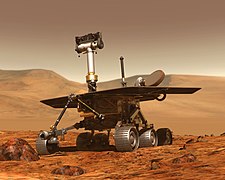A Guide to Purchase a Digital camera
By: Roberto Sedyciashotographic camera became a desired consumer item since it became handheld many years ago. As it became digital with no need for film processing, digital camera became even more popular and it is now considered one of the most wanted optical/electronic consumer products.
However buying a digital cameras may be a bit difficult due to the many brands and models being offered. After all there are so many features, one has to be sure of his needs in picking the right digital digital cameras. The following tips might of some help:
1 - Price range: It is recommended that you establish a price range you are willing to pay for your new digital camera. Prices can start from bellow a hundred up to thousands of dollars.
2 - Features: Within the price range previously established, check the features available in digital cameras. Make sure it will meet your requirements for your personal or professional goals. You may find features such as zoom, automatic functions, special effects, black & white images, video recording capability and others.
3 - Battery life: Depending upon the places you go, charging the camera`s battery may not be possible. So make sure the battery life will last long enough during your outdoor activities. Also it may be a good idea to have some extra rechargeable batteries, so that that you won`t have to stop using the camera, while the original batteries are being charged.
4 -Digital Memory Storage: Digital photographs are stored in the digital camera`s memory. Most digital cameras have built in memory, but it will accept memory card as well, to increase its storage capability. Depending upon the picture resolution, a user can take hundreds of shots, before it exceeds the memory storage.
5 - Image Resolution: Also known as pixel resolution, this is one of the most talked about features in digital cameras. Although 2.0 mega pixels will deliver good photos for any personal and emailing purposes, nowadays digital cameras with 8.0 and above mega pixels (million of pixels) have become a standard feature. The higher the mega pixel resolution, the better it will look the pictures in larger prints. For those thinking about image enlargement, high mega pixel resolution is a must.
6 - Lens: Beware that the zoom feature may be of two kinds: optical and digital. Optical zoom relies on the lens magnification and delivers a good, sharp and clear image. On the other hand, digital zoom is the magnifying of the digital image and produces a less sharp, grainy image. So make sure that the digital camera offers some optical zoom capability. Also look for lens auto focus and image stabilization features.
7 - LCD: LCD screen is a standard feature in every digital camera, and it works for framing the shot beforehand and viewing it afterwards. Look for LCD screen size 2 inches and above for better clear images.
8 - Online Stores: Whenever looking for the best deals in digital cameras, take a look at some trusted internet stores. Since prices are posted in web sites, people may find very easy to compare them, and get the best deals. Also take a look at some auction sites, for new and used digital cameras.
Digital camera has definitely become a very popular consumer product. The easy of taking shots and emailing to friends have really made this item an absolute must-have kind of product. I guess one could say that people found in digital cameras the perfect tool to preserve special moments by sharing digital photos with loved ones, around this ever growing wide web world.
This article is under GNU FDL license and can be distributed without any previous authorization from the author. However the author´s name and all the URL´s (links) mentioned in the article and biography must be kept.
This article can also be accessed in portuguese language from the News Article section of page http://www.polomercantil.com.br/camera-digital.php
Roberto Sedycias has a bachelor degree in Business Administration and over 20 years experience in systems analysis and computer programming. Currently working as IT consultant for http://www.polomercantil.com.br
by digital camera knowladge























